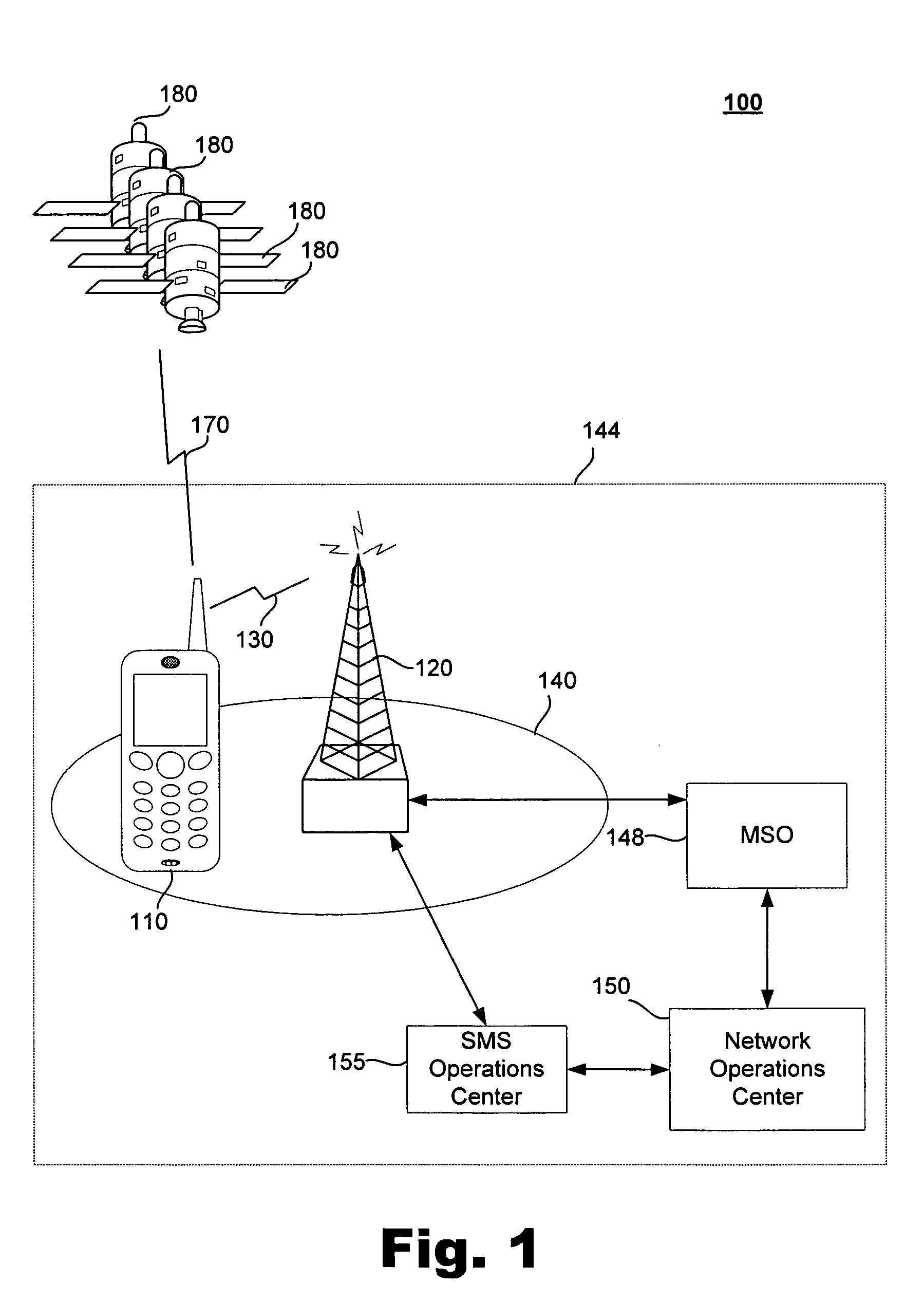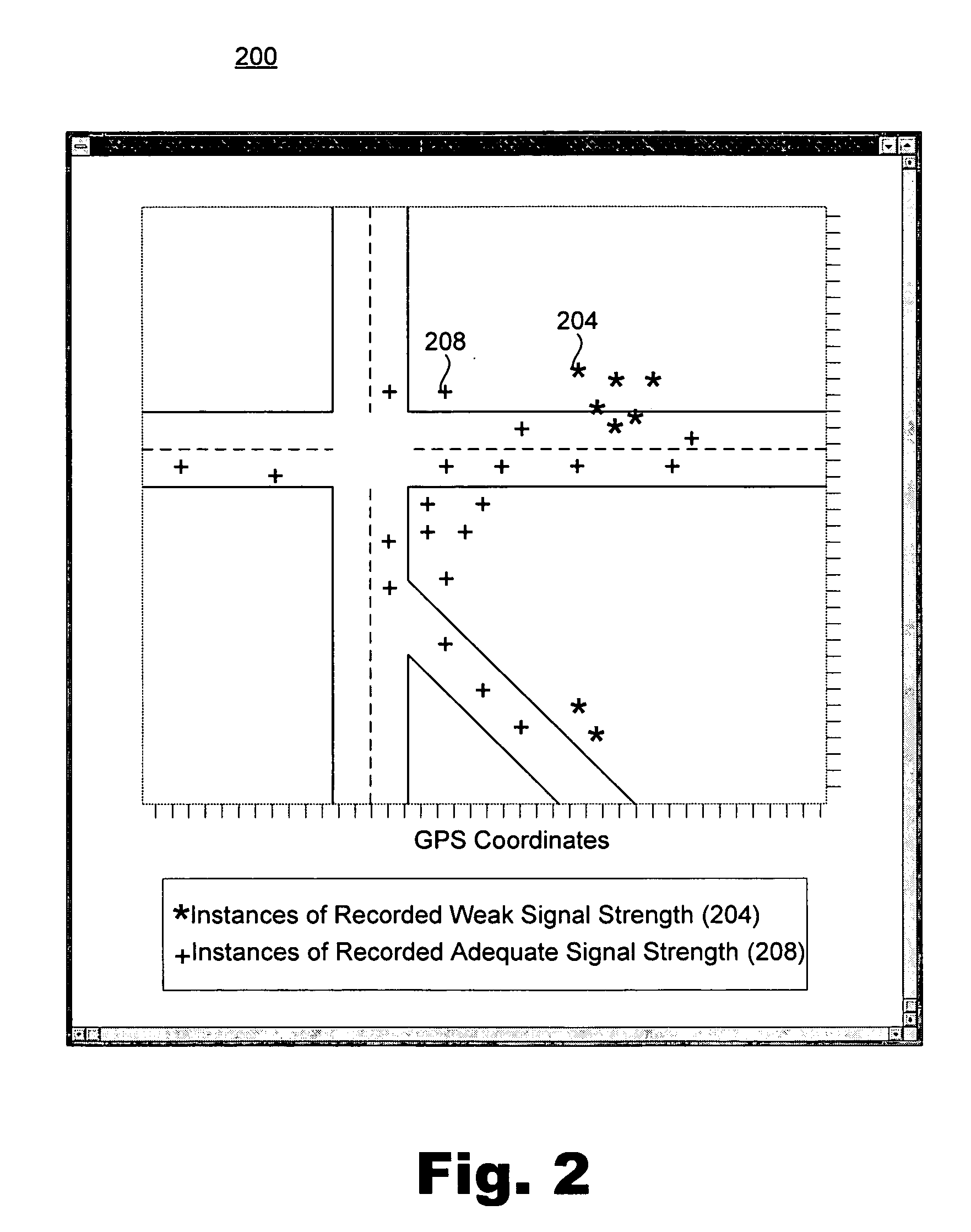Systems and methods for tracking signal strength in wireless networks
a wireless network and signal strength technology, applied in the field of wireless network signal strength tracking systems and methods, can solve the problems of undesired compromise of the effective range of rf signals, undesired attenuation or interference of cellular rf signals, and weak cellular reception
- Summary
- Abstract
- Description
- Claims
- Application Information
AI Technical Summary
Benefits of technology
Problems solved by technology
Method used
Image
Examples
Embodiment Construction
I. Overview
[0015]Preferred embodiments according to the present invention may be implemented as systems and methods for tracking downstream wireless signal strengths in wireless networks. More specifically, the described systems and methods (collectively the “system”) provide for the use of parameter data (e.g., location data, time data) to track signal strength within wireless networks. At least one positioning technology (e.g., GPS technology) other than wireless network positioning technologies (e.g., cellular network trilateration techniques) may be used to identify parameters (e.g., location, time, and / or velocity) of wireless devices configured to operate in the wireless network.
[0016]Wireless devices (e.g., cellular telephones) within a wireless network may be configured to measure the strength of received wireless network signals transmitted from wireless access points (e.g., base stations) used in the network. For certain measured signal strengths, corresponding parameter d...
PUM
 Login to View More
Login to View More Abstract
Description
Claims
Application Information
 Login to View More
Login to View More - R&D
- Intellectual Property
- Life Sciences
- Materials
- Tech Scout
- Unparalleled Data Quality
- Higher Quality Content
- 60% Fewer Hallucinations
Browse by: Latest US Patents, China's latest patents, Technical Efficacy Thesaurus, Application Domain, Technology Topic, Popular Technical Reports.
© 2025 PatSnap. All rights reserved.Legal|Privacy policy|Modern Slavery Act Transparency Statement|Sitemap|About US| Contact US: help@patsnap.com



